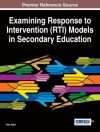Break the cycle of surface-level change and failure
How do leaders become clearer as complexity increases? We live in a world where decisions require judgment, getting people on board, drawing on local knowledge, ingenuity, and commitment. As leaders, how do you get beneath surface-level change to tackle complex challenges with depth and clarity.
Nuance is the answer.
Michael Fullan returns with an eminently readable, compelling and practical guide on the three habits of nuance: joint determination, adaptability, and culture-based accountability. Learn how you can:
· Combine the power of networks and humanity to get to desired destinations.
· Embrace complexity and understand context to develop better judgment
· Change the culture of your organization to harness the forces of nuance.
· Develop quality change that sticks
With tons of examples and case studies of this book makes explicit the hidden habits and mind frames of leaders who deliver lasting change.
Table of Content
Introduction: Making the World Go Round
Chapter 1. The Nature and Need for Nuance
Nuance: A Subtle Difference in or Shade of Meaning, Expression, or Sound
Surfacers vs. Nuancers
Leonardo da Vinci: The Patron Saint of Nuance
Nuance: Never More Needed Than Now
The Nature of Nuanced Leadership
The Nuanced Leadership Framework
Chapter 2. Jointly Determined Change: Be Right at the End of the Meeting
The Prevalence of Bad Leadership
Joint Determination
Case Example One: The Problem of Declining Levels of Principal Well-Being
Case Example Two: Districtwide Transformation to “Deep Learning”
Case Example Three: School Turnaround
Case Example Four: Turning Around Persistently Failing Schools
Integrative Leadership
Chapter 3. Adaptability: Learn and Lead in Equal Measure
Case Example Five: Rescuing Education From Technology
Case Example Six: The Toronto District School Board
Case Example Seven: Shattering Inequity
Case Example Eight: Global Initiative in Deep Learning
Adaptability
Chapter 4. Culture-Based Accountability: Trust and Interact
The Fruitless Pursuit of Top-Down Accountability
Ingredients of Culture-Based Accountability
1. Use the Group to Change the Group
2. Precision Over Prescription
3. Feedback: Collaboration, Candor, and Autonomy
4. Trust and Interact vs. Trust but Verify
5. See the Forest and the Trees
6. Accountability as Culture
Examples of Natural Accountability Linked to Results
Case Example Nine: Strengthening Whole System Accountability
Case Example Ten: Integrating Accountability and Improvement
Culture Counts
Chapter 5. Nuanced Leaders and the World
More Macro
Learners and Change Agents: Attack Inequity and Thrive on Every Level
Being and Becoming a Nuanced Leader
References
Index
Acknowledgments
About the Author
About the author
Michael Fullan served as Premier Dalton Mc Guinty’s Special Policy Adviser in Ontario from 2003-2013. He received the Order of Canada (OC) in December 2012 and holds five honorary doctorates from universities around the world. His ‘interim autobiography’, Surreal Change, covers his work to 2018. Michael and his colleagues are now working diligently on field-based comprehensive system change in several countries. This work operates under the umbrella of what they call the ‘shared humanity paradigm’ —Equity, Engagement, Excellence–Deep change that integrates local (school and community), middle (district/regional), and state (policy) entities.Fullan’s favorite method of learning is to partner with groups that are engaged with change; and to learn together with them. (And then to write another book about the experiences, and what was learned).Michael Fullan’s latest books are: Nuance (2019), Spirit Work and the Science of Collaboration (with Mark Edwards, 2022), The Principal 2.0 (2023), and The Drivers (with Joanne Quinn, 2023).For more information on books, articles, videos, podcasts please go to: www.michaelfullan.ca












